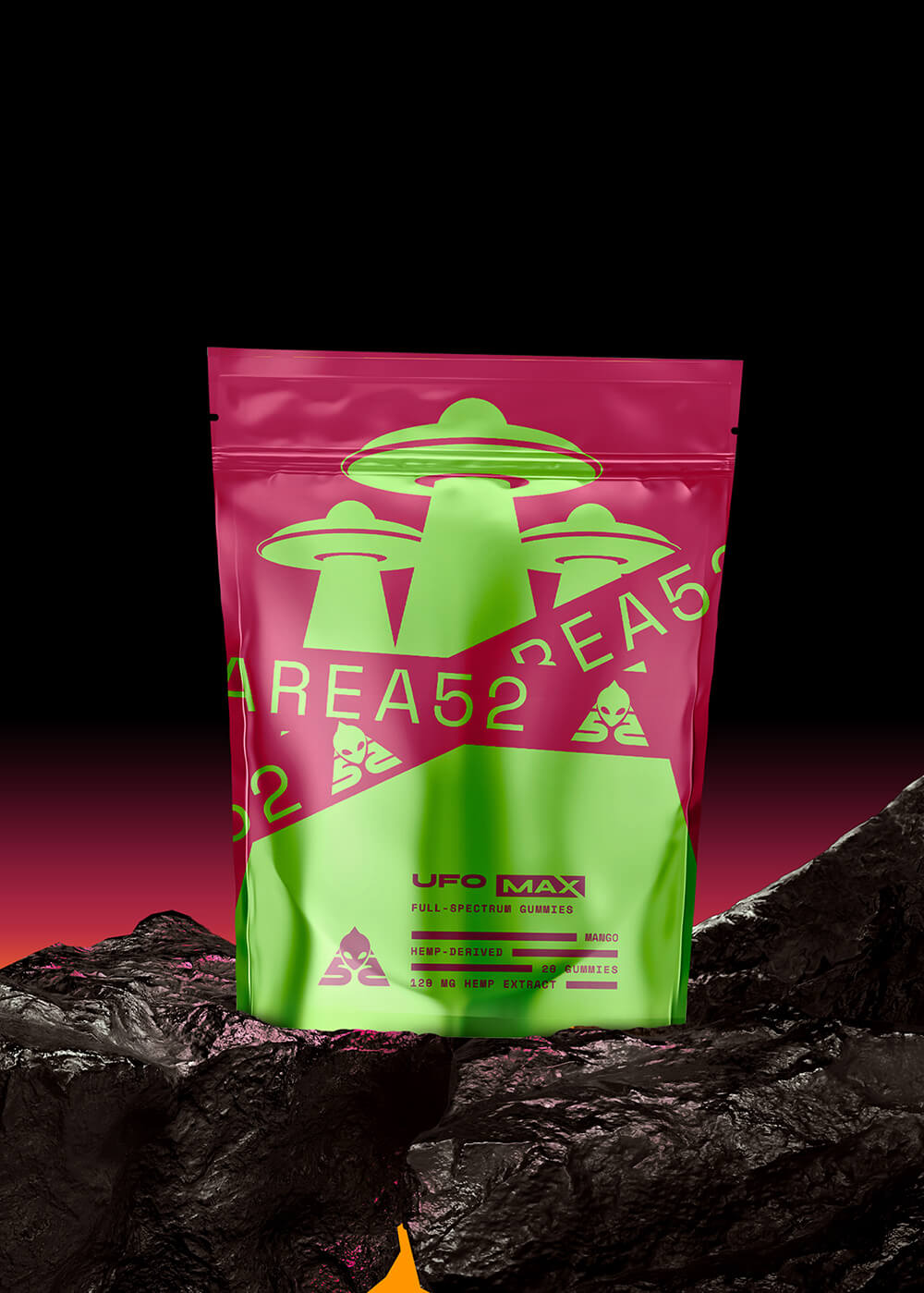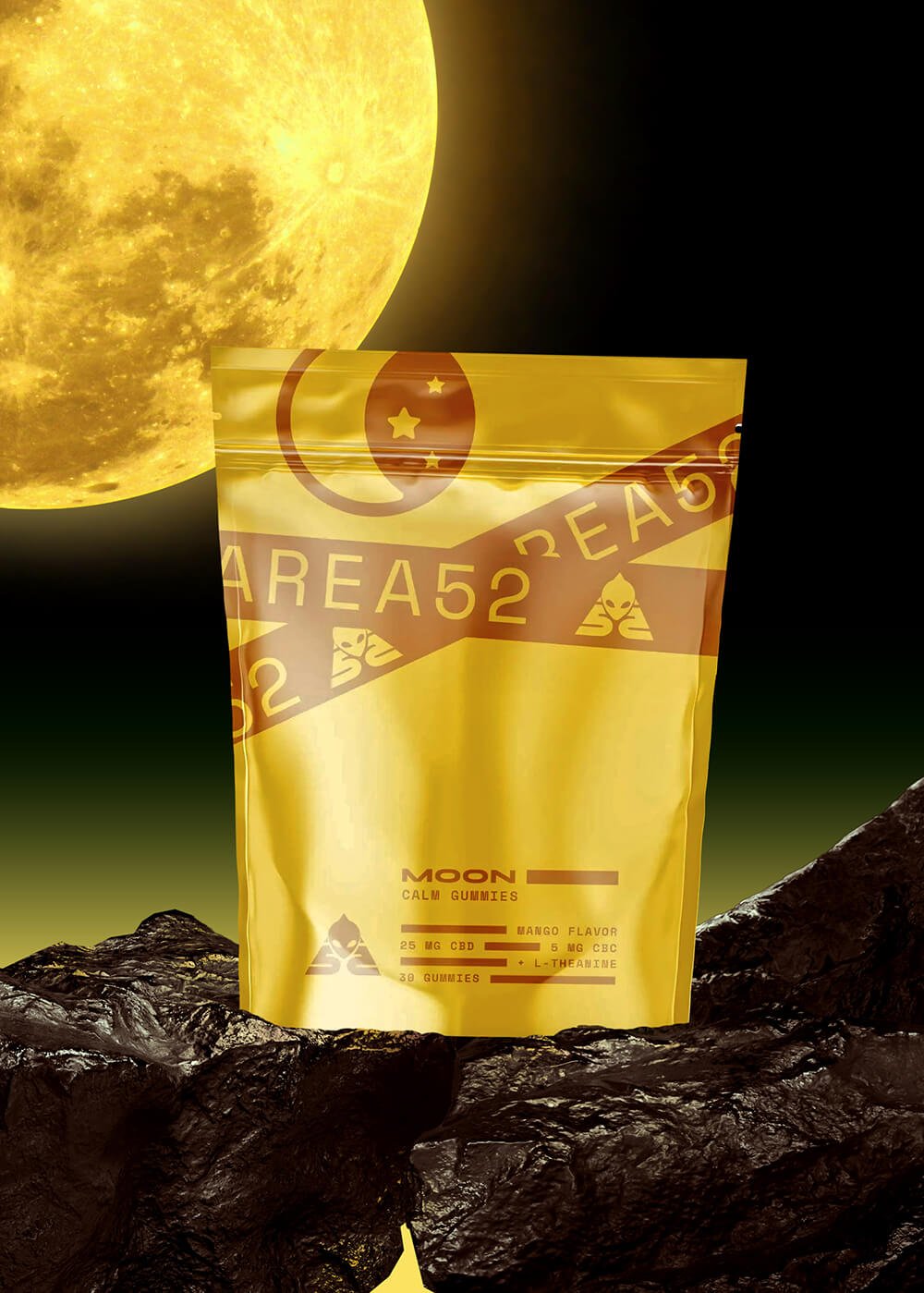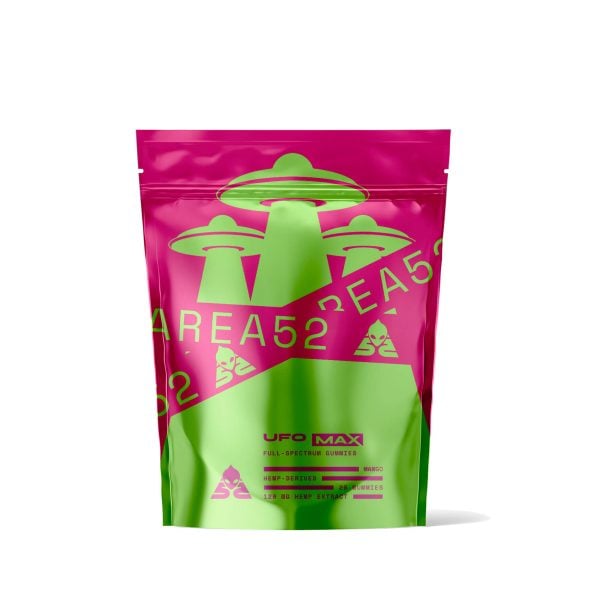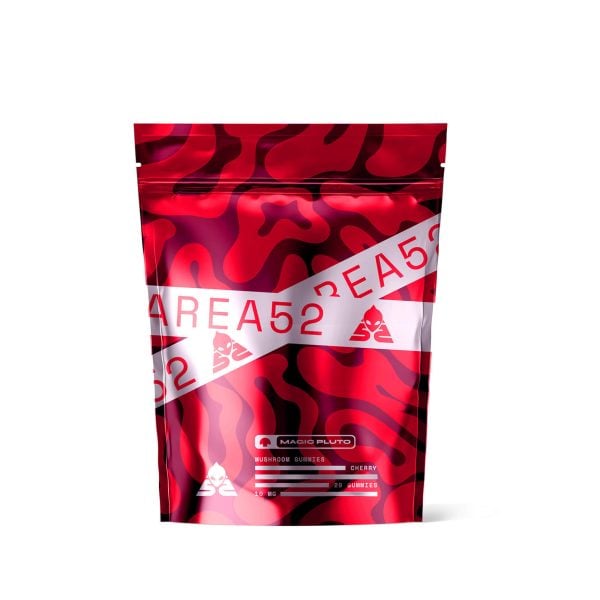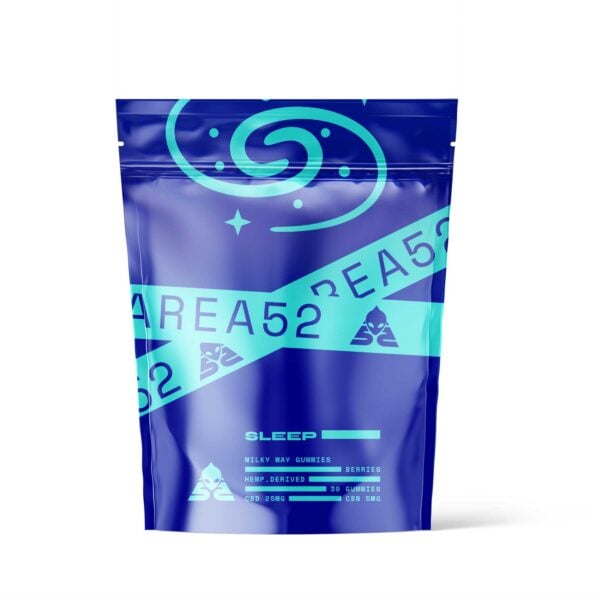What is CBDA (Cannabidiolic Acid)? Uses & Effects

You’re right to guess that CBDA is somehow connected to CBD — it’s CBD’s acidic form or precursor. Unfortunately, CBDA has lived in CBD’s shadow since the 1960s, when the major and minor cannabinoids, including their acidic compounds, were first discovered.
However, scientists are now coming to realize they should’ve paid more attention to this novel cannabis compound. In this article, we’re going to explain exactly why.
Here’s a look at why CBDA is becoming so popular and where to find get ahold of some yourself.
What is CBDA?

CBDA stands for cannabidiolic acid (CBDA) turns into CBD given enough heat, light, or time (a process called decarboxylation).
Rafael Mechoulam first isolated CBDA in 1965, but not much was done with it because of its instability. It wasn’t so much that no one saw its potential — CBD was just easier to work with and could be produced in large amounts.
In fact, Mechoulam said this about CBDA:
“It turns out that cannabidiol acid in the studies we have undertaken so far is more potent than cannabidiol itself. The chances are that slowly, and to a certain extent, cannabidiol acid will prove to be parallel to cannabidiol oil in its activity because, in many aspects, it’s much more active.”
Still, why bother with CBDA when CBD was right there, ready and willing? It’s like the genius yet inconsistent employee. They could go far but take too much time and energy to reign in, so you stick with the less intelligent employee that shows up (not that CBD isn’t great; it’s just an analogy). Scientists didn’t want to bother with it. So, what changed?
Technology and research: We can stabilize CBDA and have more reasons to try.
New technology — discovered by a team led by Mechoulan himself — allows the cannabinoid acids like CBDA to be stabilized through esterification (a chemical process), transforming them into something consistent and patentable.
Side note: It’s also possible to synthesize CBDA from CBGA.
This is excellent news for pharmaceutical companies. Now they can manufacture these acids then charge an arm and a leg for something we should be able to access naturally. Fantastic.
Side note: It’s also possible to synthesize CBDA from CBGA or cannabigerolic acid. CBGA is considered the “mother of all cannabinoids” and transforms into the major cannabinoid precursor compounds like CBDA and THCA as the cannabis sativa plant matures. CBGA converts to CBG, and the other acidic cannabinoids then become CBD and THC, respectively. The CBGA in growing cannabis plants also converts to other forms of cannabinoid compounds like CBC when it gets exposed to heat, light, and oxygen.
How Do You Get CBDA?
No need to wait for big pharma to get its claws into it — raw cannabis can do the trick. Eat the flowers (about 0.25 g) in a salad, juice them, or make tea. Just keep the temps low. You want it like you want your relationships: hot, but not too hot.
Just remember, the minute you smoke or dry the plant, most of the raw CBDA converts to CBD, and you lose the potential therapeutic benefits of CBDA.
Fun fact: Optimal conversion happens at 230℉ for 40 minutes in your oven; or, speed up the process and do 290℉ for 10 minutes. But right now, we’re talking about preserving CBDA, so don’t do that.
Maybe you want to avoid the hassle or already have enough salad in your life, and that’s fine. There are plenty of products out there, such as CBDA oil, tincture, isolate, or topical. As CBDA becomes more popular, you can find a good variety of tinctures, lotions, and capsules. Just be careful where you shop for them. The last thing you need is fake full-spectrum or broad-spectrum CBDA cannabis products.
Whatever route you take, start with 5-10 mg daily, and give it about a month of consistent use before deciding if you see a difference or not. Some things take time.
How Does CBDA Work?
CBDA is a cannabinoid, so it’s easy to assume it acts as an agonist or antagonist to cannabinoid receptors. Scientists once thought the same thing. We’re finding out that it’s not that simple. After all, we still aren’t 100% certain how CBD works.
It seems CBDA interacts with CB1 and CB2, but the body’s endocannabinoid system is complicated, so we’ll stick with what we do know.
- CBDA research studies show CBDA can activate transient receptor potential (TRP) cation channels TRPV1 and TRPA1 and antagonizes TRPM8.
- CBDA may interact with cyclooxygenase (COX) enzymes 1 and 2, with a 9-fold higher selectivity than COX-1 inhibition.
- CBDA may interact with the 5-HT1A receptors.
- CBDA shows a strong dependence on some sesquiterpenes, particularly guiaolstol, γ-eudesmolstol, trans-α- bergamotenest, γ-elemenest, α-bisabololstol, and α-farnesenest.
We need more research and clinical trials before we can know the implications of this information, but we discuss some of the possibilities below.
How Does CBDA Make You Feel?
CBDA is not psychoactive and will not make you high. Its effects seem to primarily be on the therapeutic level instead of anything you feel.
Many other cannabinoids, like THC and CBD, interact with the cannabinoid receptors, causing more pronounced physical effects (THC causes the high, CBD is relaxing). CBDA doesn’t seem to impact the endocannabinoid system in a profound way, but you can expect some pain relief and relaxation from it.
Is CBDA Legal?
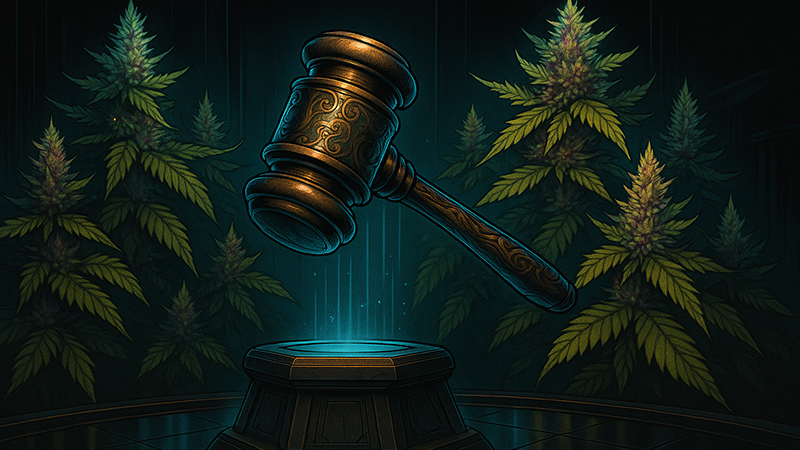
Laws vary by state, but like CBD, CBDA products are federally legal as long as it’s from hemp and has less than 0.3% THC.
Federally, anything derived from marijuana is illegal, as is anything with too much THC. States have different laws; most are far more relaxed, but a few are stricter.
If marijuana is legal in your state, you can buy marijuana-derived CBDA and products with a higher THC content.
Check out your local laws to be sure.
How is CBDA Different from CBD?
We know far more about CBD than CBDA benefits, but that’s not CBDA’s fault. It’s ours for not taking the plant and its compounds seriously. Research on this unique cannabinoid is sparse and primarily centers around in vitro and animal testing — neither of which offers enough data to draw any conclusions on its effects on human health.
Still, no reason to dwell on the past. What’s done is done — time to move forward.
We already discussed how CBD is more stable than CBDA. It’s more abundant and interacts with both cannabinoid receptors, while CBDA doesn’t, at least not in any meaningful way.
Here are a few other points of interest:
- CBDA compared to CBD doesn’t seem to diminish THC’s effects like CBD does
- CBDA might absorb better than CBD when taken orally
- CBDA could offer similar effects to CBD — but targets other areas and is more effective in some cases
We’ll look at what CBDA does next.
There are Three Medical-Use Patents Filed For CBDA
GW Pharma has filed three patents for medical products that contain CBDA and other cannabinoids.
- The first patent (35 USC § 371) is an active pharmaceutical ingredient (API) that contains CBD and one other cannabinoid, either CBG, CBGA, CBDA, or THCV. It would be used to treat various cancers, including breast, liver, lung, pancreatic, ovarian, gastric, renal, bladder, and melanoma.
- Another patent (Ser. No. 16/417,860) is for cosmetic skin treatments for inflammatory skin diseases containing one or more of the following: CBD, CBDA, CBDV, CBG, CBGV, and THCV.
- Patent WO-2017025712-A1 is for a high-CBDA product (at least 60% but ideally 95-98%) for the treatment of epilepsy.
Conclusion: Plenty of Possibilities With CBDA

CBDA is just one of the many cannabinoids waiting to be researched. Hopefully, their time has come, and we’ll finally be able to utilize these amazing compounds.
While we know very little about CBDA, the potential is there. It might feel like there’s nothing going on — after all, we’re used to the high from THC and delta 8 and the relaxing effects of CBD.
Hopefully, this gives some insight into what goes on far below the surface. CBDA is quietly working away offering us benefits we don’t fully understand yet.
Intriguing, isn’t it?
FAQs on CBDA and Its Effects & Health Benefits
Learn more about CBDA and its beneficial effects through this short list of commonly asked questions about this cannabinoid.
1. What Does CBDA Do for the Body?
CBDA shows promise, and research says it may help decrease discomfort and pain as well as reduce inflammation. CBDA may also help ease nausea.
2. Is CBDA More Powerful Than CBD?
CBDA is more powerful than CBD when it comes to some beneficial effects. For example, its anti-nausea effect is more potent than CBD’s, and you need a significantly lower CBDA dose (100x to 1000x less) than CBD to elicit the same effect.
3. Is CBDA the Same as THCA?
Both CBDA and THCA share a similar molecular structure, but how their molecules are arranged differs. They’re also the non-psychoactive acid forms of both CBD and THC. However, unlike THCA which converts into psychoactive THC when heated, CBDA when it converts to CBD remains non-psychoactive.
4. What are the Side Effects of CBDA?
CBDA, in general, is safe to consume, but it also has some side effects similar to CBD, such as dry eyes and dry mouth. However, they’re milder than the latter.
5. Does CBDA Get You Stoned?
No. CBDA won’t get you stoned. It’s one of the non-psychoactive cannabinoids present in the cannabis plant (both marijuana and hemp plants) and doesn’t activate the CB1 in the same way that THC does.
References Used
- Valliere, M. A., Korman, T. P., Woodall, N. B., Khitrov, G. A., Taylor, R. E., Baker, D., & Bowie, J. U. (2019). A cell-free platform for the prenylation of natural products and application to cannabinoid production. Nature communications, 10(1), 1-9.
- Navarro, G., Varani, K., Lillo, A., Vincenzi, F., Rivas-Santisteban, R., Raïch, I., … & Franco, R. (2020). Pharmacological data of cannabidiol-and cannabigerol-type phytocannabinoids acting on cannabinoid CB1, CB2, and CB1/CB2 heteromer receptors. Pharmacological Research, 159, 104940.
- Franco, R., Rivas-Santisteban, R., Reyes-Resina, I., Casanovas, M., Pérez-Olives, C., Ferreiro-Vera, C., … & Nadal, X. (2020). Pharmacological potential of varinic-, minor-, and acidic phytocannabinoids. Pharmacological research, 158, 104801.
- Rock, E. M., & Parker, L. A. (2013). Effect of low doses of cannabidiolic acid and ondansetron on LiCl‐induced conditioned gaping (a model of nausea‐induced behaviour) in rats. British journal of pharmacology, 169(3), 685-692.
- Takeda, S., Misawa, K., Yamamoto, I., & Watanabe, K. (2008). Cannabidiolic acid as a selective cyclooxygenase-2 inhibitory component in cannabis. Drug Metabolism and Disposition, 36(9), 1917-1921.
- Bolognini, D., Rock, E. M., Cluny, N. L., Cascio, M. G., Limebeer, C. L., Duncan, M., … & Pertwee, R. G. (2013). Cannabidiolic acid prevents vomiting in S uncus murinus and nausea‐induced behaviour in rats by enhancing 5HT1A receptor activation. British journal of pharmacology, 168(6), 1456-1470.
- McKinley, R. L. (2022). Marijuana, a Journey through the Endocannabinoid System: Unmasking the Paradoxical Effect-Part 1.
- van Breemen, R. B., Muchiri, R. N., Bates, T. A., Weinstein, J. B., Leier, H. C., Farley, S., & Tafesse, F. G. (2022). Cannabinoids Block Cellular Entry of SARS-CoV-2 and the Emerging Variants. Journal of natural products. [8]
- Zarghi, A., & Arfaei, S. (2011). Selective COX-2 inhibitors: a review of their structure-activity relationships. Iranian journal of pharmaceutical research: IJPR, 10(4), 655.
- Jannapureddy, S., Sharma, M., Yepuri, G., Schmidt, A. M., & Ramasamy, R. (2021). Aldose reductase: An emerging target for development of interventions for diabetic cardiovascular complications. Frontiers in Endocrinology, 12, 78. [10]
- Gorelik, A., Gebai, A., Illes, K., Piomelli, D., & Nagar, B. (2018). Molecular mechanism of activation of the immunoregulatory amidase NAAA. Proceedings of the National Academy of Sciences, 115(43), E10032-E10040. [11]
- Leishman, E., & Bradshaw, H. B. (2015). N-acyl amides: Ubiquitous endogenous cannabimimetic lipids that are in the right place at the right time. In The Endocannabinoidome (pp. 33-48). Academic Press.
- Rock, E. M., Limebeer, C. L., Petrie, G. N., Williams, L. A., Mechoulam, R., & Parker, L. A. (2017). Effect of prior foot shock stress and Δ 9-tetrahydrocannabinol, cannabidiolic acid, and cannabidiol on anxiety-like responding in the light-dark emergence test in rats. Psychopharmacology, 234(14), 2207-2217.
- Rock, E. M., Sullivan, M. T., Collins, S. A., Goodman, H., Limebeer, C. L., Mechoulam, R., & Parker, L. A. (2020). Evaluation of repeated or acute treatment with cannabidiol (CBD), cannabidiolic acid (CBDA) or CBDA methyl ester (HU-580) on nausea and/or vomiting in rats and shrews. Psychopharmacology, 237, 2621-2631.
- Dawidowicz, A. L., Olszowy-Tomczyk, M., & Typek, R. (2021). CBG, CBD, Δ9-THC, CBN, CBGA, CBDA and Δ9-THCA as antioxidant agents and their intervention abilities in antioxidant action. Fitoterapia, 152, 104915. [15]
- Vigli, D., Cosentino, L., Pellas, M., & De Filippis, B. (2021). Chronic Treatment with Cannabidiolic Acid (CBDA) Reduces Thermal Pain Sensitivity in Male Mice and Rescues the Hyperalgesia in a Mouse Model of Rett Syndrome. Neuroscience, 453, 113-123. [16]
- Martinenghi LD, Jønsson R, Lund T, Jenssen H. Isolation, Purification, and Antimicrobial Characterization of Cannabidiolic Acid and Cannabidiol from Cannabis sativa L. Biomolecules. 2020 Jun;10(6). DOI: 10.3390/biom10060900. PMID: 32545687; PMCID: PMC7355595.
- Kisková, T., Mungenast, F., Suváková, M., Jäger, W., & Thalhammer, T. (2019). Future aspects for cannabinoids in breast cancer therapy. International journal of molecular sciences, 20(7), 1673.
- Formato, M., Crescente, G., Scognamiglio, M., Fiorentino, A., Pecoraro, M. T., Piccolella, S., … & Pacifico, S. (2020). (‒)-Cannabidiolic acid, a still overlooked bioactive compound: an introductory review and preliminary research. Molecules, 25(11), 2638.
